15 January, 2003
Ventifacts
Contributing strongly to the otherworldly appearance of the Dry Valleys are
the Ventifacts. These are rocks that have been eroded by the sand and wind
over the course of millions of years. The windward side is smoothed on some.
While many of the rocks display the results of the wind and time there are
two types in parcticular: the rocks with the larger grain size and those with
the smaller grain size. Each reacts differently to the wind. The ones that
look like skulls, cast-off Flintstone furniture, or some sort of prehistoric
housing are large and can be piled on top of each other. We joked that at
some places it looked like the "Valley of the Skulls." Most of these are the
larger grained, brown, pyroxinite.
My favorites are the chilled margin rock. This is a fine-grained rock
smaller than the grains in sugar. They are a very deep gray, almost black.
These dolerites have very smooth sides with angles and edges that make them
very comfortable to hold. They look like something from outer space
deposited on Earth.
Antarctic Tidbits:
The lowest recorded temperature on Earth was minus 128.6 degrees Fahrenheit
at the Antarctic Soviet station Vostok on July 21, 1983.
The average annual temperature on Antarctica is minus 4 degrees Fahrenheit.
Antarctica is so remote that after a 20-hour flight from the United States
to New Zealand, it requires another 2,000 mile flight to reach the frozen
continent.
The Antarctic continent is 1.5 times the size of the 48 continental United
States, and accounts for 10 percent of the Earth's surface.
The continent was dubbed an international wilderness preserve in 1998,
banning commercial exploitation.
Sources: The World Almanac and Book of Facts, 1998; "Wings Over
Antarctica" in Aviation Week & Space Technology; "Timeless Valleys of the
Antarctic Desert" in National Geographic; Knight Ridder:

1. Ventifacts such as this pyroxenite example are prevalent in Bull Pass

2. Bruce and Taber discuss the formation of the chilled margin ventifacts

3. Ventifacts have been sculpted by the wind for millions of years
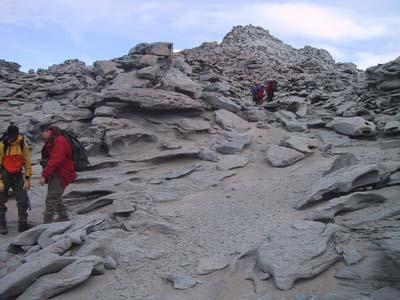
4. Ventifacts looking up a slope resemble skulls
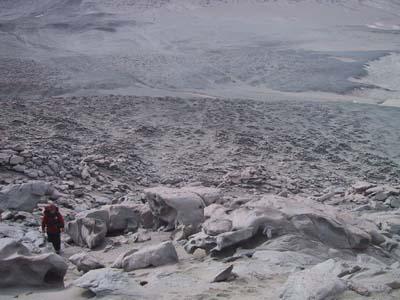
5. Looking down the west wall of Bull Pass

6. A pyroxenite ventifact balanced on a ridge overlooking the Wright Valley
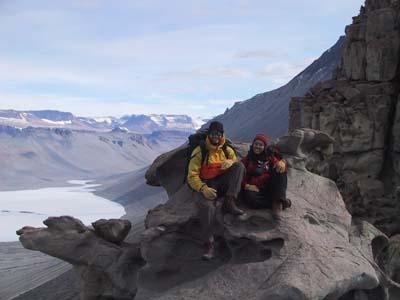
7. Taber and Karina can sit inside one of the carvings
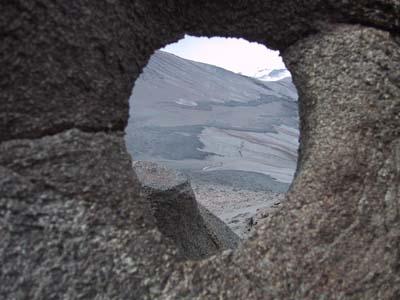
8. A view of our camp looks tiny from about a mile away
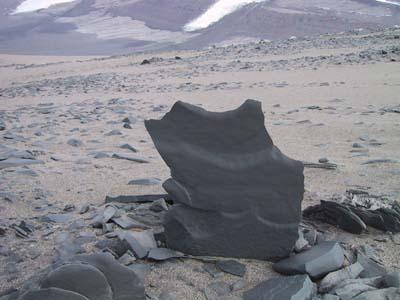
9. A dolerite vetifact from the side
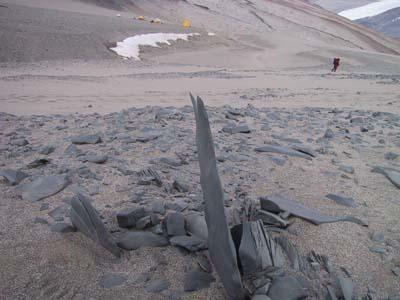
10. The same dolerite viewed from the front edge
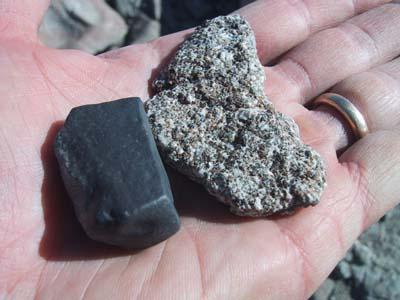
11. Ventifacts are mostly the fine grained, dark, chilled margin (dolerite) or larger grained orthopyroxene (OPX)
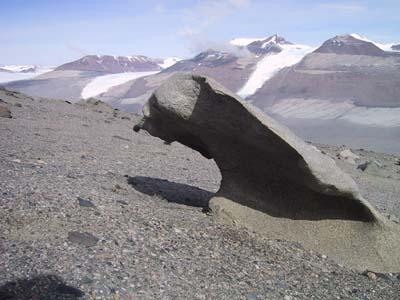
12. Bull Pass ventifact

13. Bull Pass ventifact
Contact the TEA in the field at
.
If you cannot connect through your browser, copy the
TEA's e-mail address in the "To:" line of
your favorite e-mail package.
|
